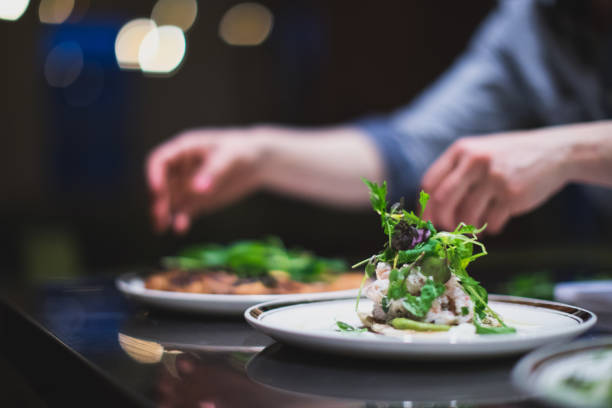Culinary Alchemy: Transforming Ordinary Ingredients into Gourmet Delights
Unlock the secrets of culinary alchemy and elevate your cooking game to new heights. Discover how simple techniques and unexpected flavor combinations can turn everyday ingredients into extraordinary dishes that will impress even the most discerning palates. Get ready to embark on a gastronomic adventure that will revolutionize your approach to cooking and dining.

Unexpected Flavor Pairings
One of the most exciting aspects of culinary alchemy is the exploration of unexpected flavor combinations. While traditional pairings like tomato and basil or chocolate and strawberry are well-established, pushing the boundaries can lead to delightful discoveries. Consider pairing watermelon with feta cheese for a sweet and salty contrast, or combining black pepper with strawberries to enhance their natural sweetness. The umami-rich flavors of soy sauce can add depth to chocolate desserts, while a touch of lavender can elevate a simple lemon tart. By experimenting with these unconventional combinations, you can create dishes that surprise and delight the palate, turning ordinary meals into memorable culinary experiences.
Molecular Gastronomy Techniques for Home Cooks
While molecular gastronomy might seem like the domain of high-end restaurants, many of its techniques can be adapted for home cooking. Spherification, for instance, allows you to create caviar-like pearls from various liquids, adding a playful element to your dishes. Foams can be easily made using a hand blender and a few simple ingredients, adding lightness and visual interest to your plates. Even something as simple as using a smoking gun to infuse foods with aromatic smoke can dramatically alter their flavor profile. By incorporating these techniques into your cooking repertoire, you can add a touch of culinary magic to even the simplest of dishes, impressing your guests and elevating your home dining experience.
Textural Transformations
Texture plays a crucial role in how we perceive and enjoy food. Culinary alchemy often involves manipulating textures to create surprising and delightful contrasts. For example, freeze-drying fruits can transform them into crispy, intensely flavored morsels that add crunch and concentrated flavor to desserts. Dehydrating vegetables can create paper-thin, crispy garnishes that add visual appeal and textural interest to salads or main courses. Even simple techniques like deep-frying herbs can create delicate, crispy garnishes that elevate the presentation and flavor of a dish. By focusing on textural transformations, you can add depth and complexity to your cooking, turning ordinary ingredients into multi-dimensional culinary experiences.
The Role of Presentation in Culinary Alchemy
The final step in culinary alchemy is presentation. How a dish is plated can dramatically affect the dining experience, engaging all the senses and setting expectations for the flavors to come. Techniques like creating edible “soil” from dehydrated vegetables or using colorful powders made from freeze-dried fruits can add visual interest and depth to your plates. Incorporating elements like smoke or dry ice can create a theatrical dining experience, engaging diners on multiple sensory levels. Even simple techniques like using negative space on the plate or creating height through careful stacking can transform the presentation of a dish. By paying attention to these details, you can elevate your culinary creations from mere food to true gastronomic art.
Useful Tips & Facts
• Sous vide cooking can transform tough cuts of meat into tender, flavorful dishes.
• Liquid nitrogen can instantly freeze foods, creating unique textures and presentations.
• Agar agar, a vegetarian gelatin substitute, can be used to create interesting gels and jellies.
• Maltodextrin can turn fats into powders, adding a unique textural element to dishes.
• Xanthan gum can be used to stabilize foams and emulsions in modernist cuisine.
• Lecithin can help create stable foams and emulsions in both savory and sweet applications.
• Cold smoking can infuse foods with smoky flavor without cooking them.
Culinary alchemy is a powerful tool that can transform your cooking from ordinary to extraordinary. By understanding the science behind cooking techniques, exploring unexpected flavor combinations, and focusing on presentation, you can create dishes that not only taste amazing but also engage all the senses. Whether you’re a home cook looking to impress your dinner guests or a professional chef seeking new inspiration, embracing the principles of culinary alchemy can open up a world of gastronomic possibilities. So, don your chef’s hat, grab your ingredients, and start experimenting – the world of culinary magic awaits!





